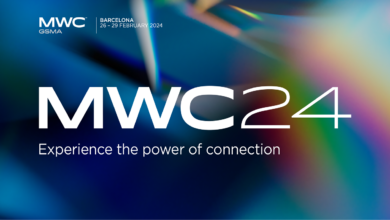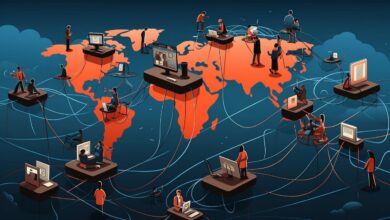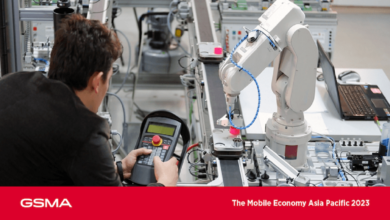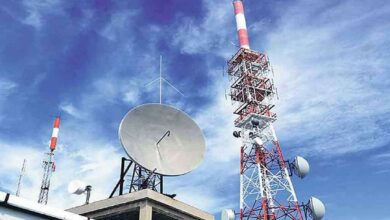Claire Sibthorpe Answers the Queries Regarding Mobile Gender Gap
Head of Connected Women and Connected Society at GSMA - Claire Sibthorpe
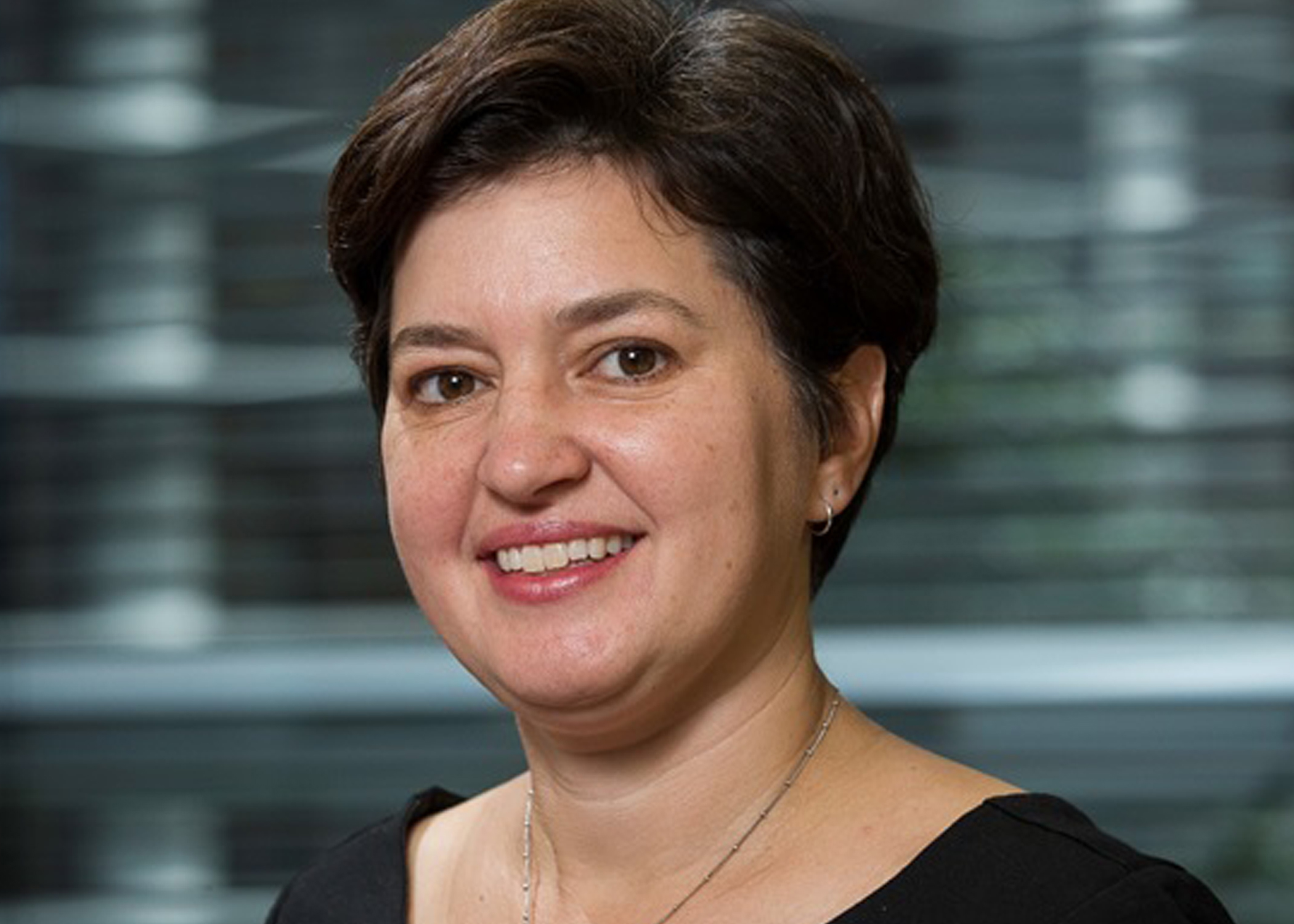
A new GSMA study shows that despite progress, the gender gap in mobile internet usage remains substantial, with over 300 million fewer women than men accessing the internet from a mobile device in low- and middle-income countries. This is a significant insight, which shows that female inclusion in the digital ecosystem is increasing, but at a slow rate.
For this reason, PhoneWorld sat with Claire Sibthorpe, who is the Head of Connected Women and Connected Society at the GSMA to discuss in detail this gender gap issue and how it affects millions of women, in Pakistan, and across the globe.
- What is the importance of GSMA’s Mobile Gender Gap Report for the industry?
There is a lack of data on the mobile gender gap despite the fact that data is critical to understanding and measuring the mobile gender gap and informing policy and business choices which can address it. The data and insights provided in this report are therefore important if we are going to address the mobile gender gap and ensure women are not being left behind in an increasingly connected world.
Our Mobile Gender Gap Report 2020 highlights the magnitude of the gender gap in mobile phone access, smartphone access and mobile internet use across low- and middle-income countries, and therefore the opportunity for the industry of reaching more female customers with mobile technology. The report also reviews the barriers to mobile ownership and mobile internet use and how these have changed over time. A range of gender-disaggregated data is provided for 15 low- and middle-income countries across Africa, Asia and Latin America to help the mobile industry better understand this opportunity in their own markets and take action. Recommendations are provided for mobile operators as well as other stakeholders on how to overcome the barriers preventing women accessing and using mobile technology.
- What are the main findings of this year’s Mobile Gender Gap Report?
54 per cent of women in low- and middle-income countries now use mobile internet and the gender gap is narrowing. Women are 20 per cent less likely to use mobile internet than men, down from 27 per cent in 2017. This reduction was driven primarily by an improvement in South Asia where the gap narrowed by 16 percentage points.
Despite this progress, the gender gap in mobile internet use in low- and middle-income countries remains substantial, with over 300 million fewer women than men accessing the internet on a mobile. The gender gap is still widest in South Asia at 51 per cent. Handset affordability remains the primary barrier to mobile phone ownership for men and women. Among mobile users who are aware of mobile internet, a lack of literacy and digital skills continues to be the main barrier to use.
Both men and women across surveyed markets report that mobile provides important benefits. In all 15 markets surveyed, the majority of male and female mobile owners report that mobile ownership makes them feel safer and provides access to important information that not only assists them in their daily lives, but that they would not have received otherwise.
- How exactly can mobile phones bring improvement in lives of women? Currently what women are missing out on?
Digital technologies have become a powerful force for social and economic development, delivering substantial benefits for women. Access to a mobile and the internet enable women to get information and services that were previously unavailable to them, opening new opportunities for income generation, personal development and engagement with community and political decision-making.
For example, Gallup research shows that mobile phone ownership supplemented with internet access is associated with an improvement in women’ wellbeing.
In the GSMAi Consumer Survey 2019, over half of mobile phone owning women in Pakistan stated that the device made them feel safer, helped them with their day-to-day work and provided access to information they would not have otherwise.
- Can digital gender equality bring social equality for women as well?
Yes. For example, GSMA research across 15 low- and middle-income countries in 2019, shows that:
- 58% – 90% of women in every country said mobile phones help them with their day-to-day work
- 53% – 94% of women in every country said mobile phones help provide them with access to information they would not have otherwise
- 54% – 91% of women in every country reported they feel safer with a mobile phone.
In fact, the importance of digital inclusion for promoting women’s rights and development is clearly recognised in the 2030 Agenda for Sustainable Development, and SDG target 5.B urges the international community to “enhance the use of digital and other enabling technologies to promote the empowerment of women”.
- Is there any improvement seen from last year?
Mobile ownership and mobile internet use in Pakistan have both seen growth since 2017. In particular, growth in female mobile internet use outstripped male growth, resulting in the mobile internet gender gap reducing to 49%.
Encouragingly, Pakistani men and women are increasingly aware of mobile internet and increasingly recognising the relevance of mobile technology to their lives. Women’s awareness of mobile internet has grown even faster than men’s, from only 39% of women in 2017 to 70% in 2019. This has resulted in the gender gap in mobile internet awareness closing from 16% to 11%.
- What are the main factors preventing equal mobile ownership and mobile internet use for women and men in countries like Pakistan?
In Pakistan, as well as South Asia more generally, conservative social norms govern many women’s choices and behaviour.
Family disapproval is the most important barrier preventing Pakistani women from owning a mobile phone and using mobile internet. 38% of women in Pakistan who do not yet own a mobile phone report family disapproval as the main factor preventing them from owning one, compared to only 7% of men, and 29% of female mobile users in Pakistan report family disapproval as the main factor preventing them using mobile internet, vs only 2% of men.
Other important factors reported by women – and also men – in Pakistan that prevent them from accessing mobile phones and using mobile internet include underlying difficulties reading and writing, and the cost of mobile handsets and data.
- How Can We Close the Gender Gap in Mobile Phone Use in Pakistan?
The digital gender gap in Pakistan is not going to close on its own. Its root causes are driven by a complex set of social, economic and cultural barriers. Targeted intervention and collaboration is needed among a range of stakeholders, including the mobile industry, policymakers and the development community to address the barriers faced by women. For example, policymakers can invest in public education and digital literacy initiatives that increase women’s and girls’ mobile digital literacy, and support initiatives to help reduce the cost of devices and services for customers, and mobile operators can ensure marketing and services consider the role of the gatekeeper and are accessible for those with lower literacy levels and digital skills, and support industry efforts to lower the cost of internet-enabled mobile phones.
- What role government can play in closing the mobile gender gap? What policy and regulation changes are required in Pakistan?
Bridging the digital divide including the gender disparity is one of the key objectives of the Digital Pakistan policy.
For example, in April 2019, the government of Pakistan launched a policy on support programmes for the most vulnerable people in society, including ‘Kifalat’, which is intended to ensure digital and financial inclusion of around 6 million women through the “one woman, one bank account” policy.
Such initiatives are welcome and more needs to be done to closing the gender gap in mobile ownership and mobile internet use in Pakistan. In particular, this will require a proactive approach, with specific targets and strategies to stimulate digital inclusion among women.
Addressing the affordability barrier in particular is necessary and the government can play a key role here by considering the further reduction or elimination of sector-specific taxes on devices and services, to make them more affordable to users.
By equipping people with the skills and tools that support digital and financial inclusion, this can help bring more people into the formal economy and, by extension, expand the tax base.
Finally, we encourage the government to invest in public education initiatives that increase females’ mobile digital literacy and confidence, including for girls and women across all levels of education, income and familiarity with mobile and the internet.
These are some of the topics that were discussed at the recent National Dialogue High Level Roundtable in October and the GSMA will continue to support the Pakistani government in this area, leveraging the PTA-GSMA Capacity Building Centre of Excellence that was established last year to provide opportunities of capacity building to professionals and policy makers from Pakistan and from across the region to get trainings on cutting-edge technologies and digital inclusion issues.
- Once we are successful in closing our country’s mobile gender gap, what commercial and economic opportunities will open up for Pakistan?
Closing the mobile gender gap represents an important commercial and economic opportunity in Pakistan. In 2017, Pakistani mobile operators generated $3.4bn revenue, contributing $1.8bn of direct economic value to the Pakistani economy (0.6% of GDP). The GSMA estimates that closing the gender gap in mobile internet use across low- and middle-income countries could add $700 billion in GDP growth (representing an additional 0.7 per cent of GDP growth) in these countries over the next five years. According to GSMAi data, Pakistan’s mobile industry would benefit from a potential revenue uplift of 54% if it closed both the gender gap in mobile ownership and the gender gap in spending on mobile services.
Greater access to mobile services among women also has the potential to transform economies, accelerating economic growth and development. Improvements in mobile connectivity can improve communication and trade within an economy, while also making a country more attractive for foreign investment.
Closing the gender gap in mobile money can also expand access to financial services, providing low-income women with a secure, accessible and convenient method to manage their finances.
- How do you see the progress of mobile industry in Pakistan?
Mobile technology has the potential to become a vital tool to drive digitally enabled social development and economic growth in Pakistan. The technology remains at the heart of Pakistan’s digital transformation with mobile broadband networks now covering 80% of the population, and 97% of internet connections based on mobile connectivity. The total value added generated by mobile operators in 2018 – taking into account direct, indirect and productivity effects – was around $16.7 billion, equivalent to 5.4% of GDP.
Yet Pakistan has the largest mobile gender gap in the world. Despite progress only half of Pakistani women own a mobile phone, compared to 81% of men, and only 19% of Pakistani women use mobile internet, compared to 37% of men. Mobile operators such as Telenor and Jazz are recognizing this opportunity and taking action to reach more female customers. The gender gap in access to mobile phones and mobile internet use are both reducing and Pakistani men and women are increasingly aware of mobile internet and increasingly recognising the relevance of mobile technology to their lives. Women’s awareness of mobile internet has grown even faster than men’s, from only 39% of women in 2017 to 70% in 2019.
Check out? How to download Google Maps, Facebook and WhatsApp on Huawei Y7p
- What are your thoughts on state of women in Pakistan, especially in ICT world?
The country lags behind many of its neighbours in South Asia on several key human development indicators, including gender equality. The country was ranked 151st out of 153 countries in the WEF 2020 Global Gender Gap report. A major challenge for example is the difference in literacy rates between men (71%) and women (46%), which has an impact on women’s professional representation in the ICT sector. However, there have been some notable developments and we recently welcomed the appointment of Tania Aidrus as Special Assistant to the Prime Minister on Digital Pakistan. We believe that this appointment will be key to drive the digital agenda in Pakistan going forward, including looking at ways to close the digital gender divide.
PTA Taxes Portal
Find PTA Taxes on All Phones on a Single Page using the PhoneWorld PTA Taxes Portal
Explore NowFollow us on Google News!
